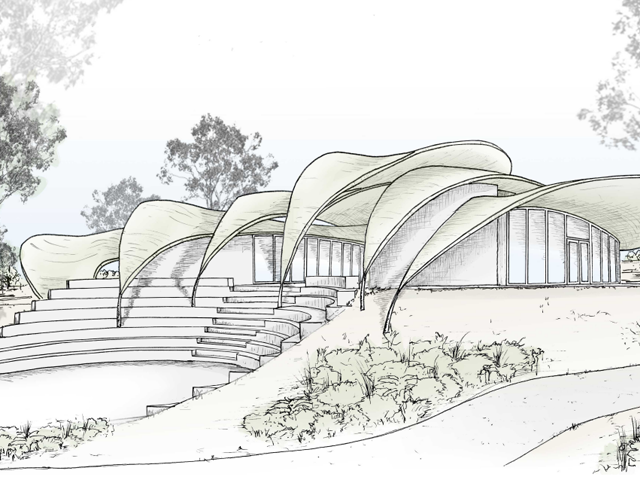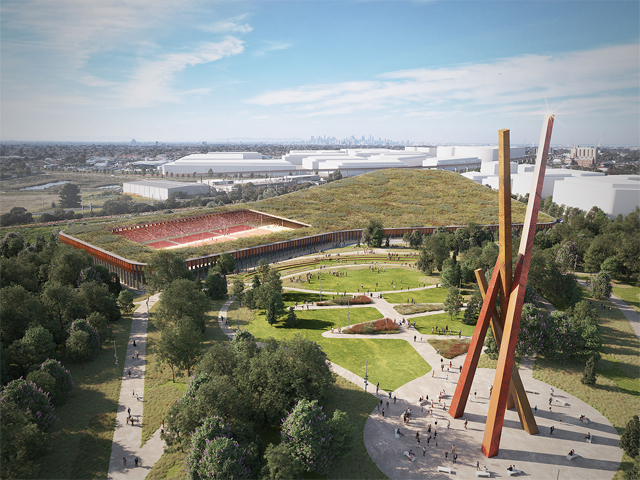ESPORTS ARENAS A RISING CHAMPION ACROSS THE GLOBE
30 Jun 2020
Esports may seem like a niche in the sporting arena, but with COVID-19 seeing a rise in virtual entertainment, this form of digital sport could end up dominating stadiums around the world. We take a look.

When Rashed Singaby, Principal at HOK, was contacted by a former client about how an existing stadium could be retrofitted to host esports events, he immediately knew this was an opportunity to create a blueprint for a type of space that has never existed before.
Singaby and his team formulated a small research group to test and understand both the standards for each type of esports game and classify them into operational substructures. Since each game requires its own type of setup, it was important to ultimately conceptualise the design ideas and make recommendations for how existing spaces could be modified in order to best consume and be involved in the experience of esports activities.
From the small scale of the ergonomics of a gaming chair, all the way to understanding what it means to host an esports festival from a high-level experiential aspect, the HOK team quickly became leading subject matter experts in developing this emerging universe that could run in parallel to its already highly successful and innovative traditional sports practice.
“We knew this was a new market and after we looked at the number of fans, gamers and the revenue this was generating compared to the lack of structure, we realised this was a great opportunity to design something new,” said Singaby.
While esports may currently feel like somewhat of a grassroots movement, the viewing of these games has been consumed all over the world. In less than 10 years, you might be opting out of your routine Sunday football game and donning your jersey to support your local or national esports team, predicts Singaby.
Community venues in the form of esports bars are already rapidly popping up around cities, and colleges are also starting to develop their own gaming facilities in an attempt to recruit players for their competitive teams – similar to how athletes are recruited for soccer, basketball and other sports. At a regional level, one esports game Overwatch now has multiple teams based in cities around the US, Asia and Europe who compete in an Olympics-style fashion. The next step for the teams at this level is to have their own home venue be recognised in the same light as other professional sports. 
The design of these arenas also presents itself with a new opportunity, since growing a fanbase will be key for a return on investment for owners who want to future-proof the infrastructure of their venues to host esports events. Particularly, these venues need to be outfitted with high-speed internet, advanced technology structures, large viewing screens, and back-of-house mechanical rooms to ensure the experience for fans and players is seamless.
Newly constructed venues solely dedicated to esports arenas as standalone sites might not be as frequent, as current arena owners are more focused on retrofit opportunities. Even the big-box retail stores that have closed due to the increase in e-commerce have repositioned themselves as potential esports venues. Overall, the flexibility for arenas to transform between hosting concerts, public events, sports matches, and now esports tournaments, is a growing trend that is disrupting the arena and stadium design industry.
Esports also demands a hands-on interactive experience, much more so than that of their traditional sports counterparts. “We looked at Fortnite, a game that can accommodate 100 gamers but theoretically the algorithm can be scalable to allow thousands of gamers to participate. In one arena with 20,000 people, it’s not far-fetched for everyone to take part in one large game,” said Singaby. “Instead of focusing all of our attention on the field or the court, there’s a possibility that the spectators may take on an entirely new role, and become the esports athletes as well.”
Especially now, given the current situation of the COVID-19 global pandemic, esports has experienced an explosion in popularity. With collegiate and professional sports still facing the looming question mark about their potential to return this year, esports has continued to thrive from the quarantined safety of player’s homes.
Remote play has thrived under these conditions and is actually serving as a sort of training and practice opportunity for when players return to the arenas. Professional sports teams who were forced to terminate their seasons early have also seen advantages of esports. When the NBA paused the 2020 season, the Phoenix Suns and Minnesota Timberwolves played their virtual season through their NBA 2K teams. While their in-person live events typically draw around 16,000 spectators and an additional 18,000 who watch it on TV, the 2K game had 3.1 million spectators, triggering an immediate uptick in merchandise and revenue generation. When live sports stopped, esports gave fans and players something to do.
Esports is here to stay and will continue to be the next big wave across both a new architectural typology and a way to increase sports fandom.
Via ArchDaily | Images © HOK and SAP

MORE NEWS

HARNESSING THE POWER OF DESIGN TO TRANSFORM CITIES

JARRAHDALE TRAIL CENTRE TAKES DESIGN CUES FROM NATIVE FLORA

MELBOURNE'S NEW PARK ON A FORMER LANDFILL SITE

STRIKING GOLD IN BALLARAT

MASTERPLAN FOR INCLUSIVE, CLIMATE-RESILIENT COMMUNITY PARK IN LISMORE

